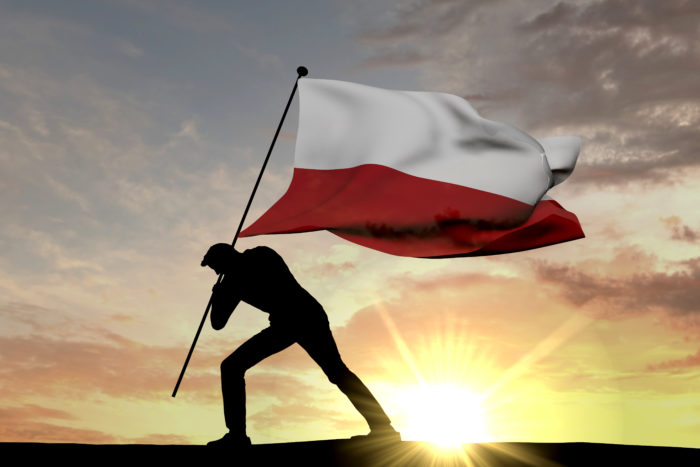On November 11, the world is celebrating the Armistice Day to commemorate the end of World War I. But for Poles this day is even more important, it’s our National Independence Day. It’s been 102 years since we regained our independence after 123 years of foreign rule. But how come the Kingdom of Poland ceased to exist, split between three powers?
What once used to be a mini-empire...
During the third partition in 1795 Poland was wiped out from the map of Europe, divided between the Russian Empire, the Austrian Habsburg Monarchy and the Kingdom of Prussia. But the end of the Polish-Lithuanian Commonwealth, which used to be a mini-empire, began earlier, with the first partition in 1772.
To understand this, we need to bear in mind that Poland was located in the middle of Europe, which turned out to be a very unfavorable location, as it was surrounded by growing empires. What is more, it was weakened by wars, invasions and even a civil war.
Russia won impressive victories in the war against the Ottoman Turks, which made the Habsburgs anxious. They threatened to join the war against Russia. Prussia didn’t want any escalation of the Russo-Turkish war, so it tried to shift Russian expansion from Turkey to Poland. In result, each of the three superpowers sliced off a piece of the Polish-Lithuanian Commonwealth, which was too weak to resist.
...was erased from the map...
After the first partition, Poland tried to strengthen itself through internal reforms. In 1791 it adopted a new, liberal constitution (the first in Europe and the second in the world). The Polish nobility, who were afraid of losing their stature and personal wealth, opposed it and formed the Targowica Confederation, which asked Russia for help. Russia didn’t hesitate to intervene and Prussia also sent its troops to Poland. Poland lost the war, which resulted in the second partition in 1793.
This angered the Polish nation and in 1794 Tadeusz Kościuszko led a national uprising. The insurrection failed and in result in 1795 Russia, Prussia and Austria agreed on dividing what was left of Poland. And so it happened, Poland was wiped out from the map.

...but couldn't be erased from people's hearts
But what could not be erased was the strong cultural identity of the Polish people. The first words of the Polish anthem, “Mazurek Dąbrowskiego”, which were written by Józef Wybicki two years after the third partition, state that “Poland is not yet lost, so long as we still live”. And the nation did everything to prove these words were true. Poles cultivated their culture and tradition, even though it was an extremely difficult and dangerous task (especially under the occupation of the Russian Empire, which implemented a program of “Russification”, banning the use of the Polish language in schools and public institutions and forbidding to read Polish books). They spoke Polish within families and organized underground schooling. Literature, poetry and music played a great role in keeping the morale up (with such geniuses as Chopin, Mickiewicz, Sienkiewicz just to name a few).
Finally an independent state again
The urge of regaining independence was so strong among Poles that they took advantage of literally every opportunity to fight for it. The 123 years abound in failed military ventures and insurrections (the two most important being the November Uprising of 1830-1831 and the January Uprising of 1863-1864). Finally, after the terrible World War I, during which Polish troops on different sides had to fight each other, Poland became an independent state again.
It wasn’t the end of the struggle, of course, and Poland had to face many difficulties, but even though the history that followed was was really tough, just look at us now, one hundred years later. We’ve got a hundred of reasons to be proud.
 LET'S DESIGN YOUR TOUR!
LET'S DESIGN YOUR TOUR!